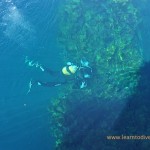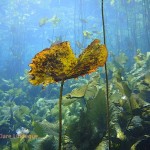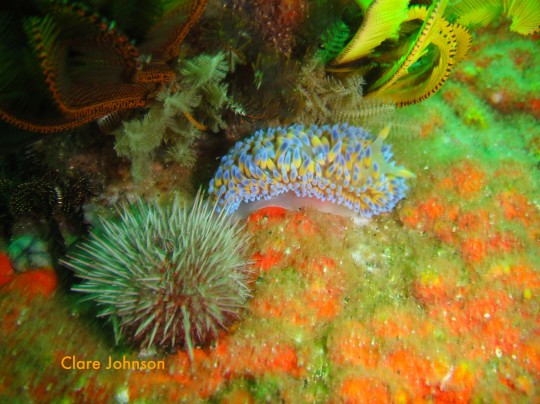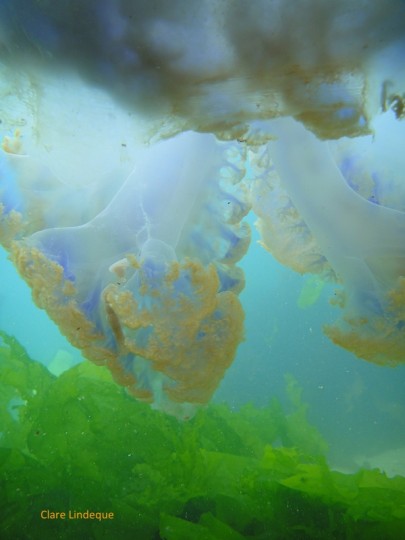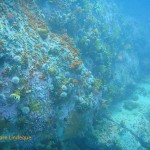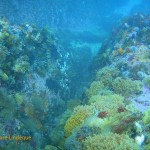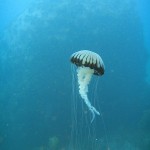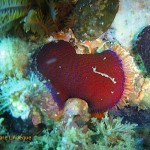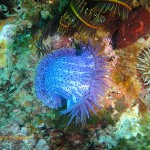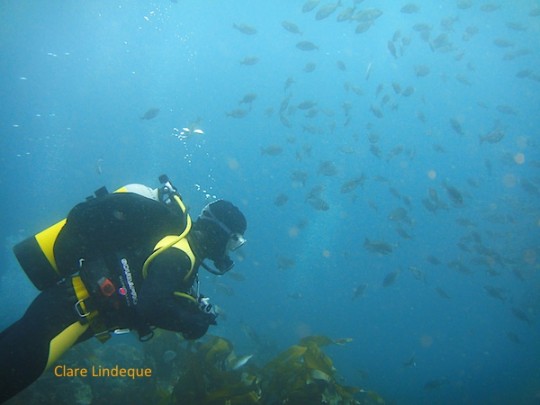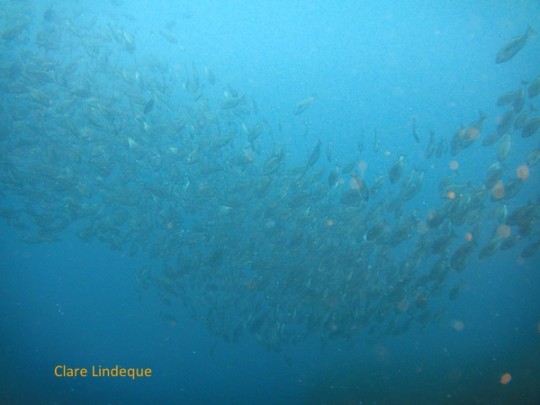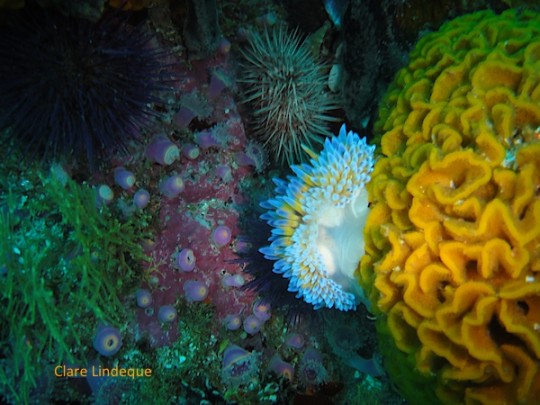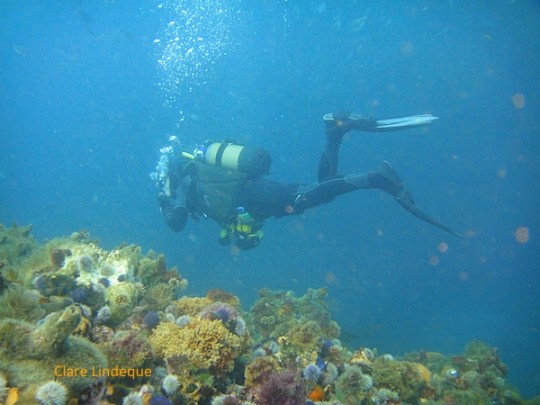
Marico Oog is a natural spring, the source of the Marico River. It is located on a farm in the North West Province of South Africa, and we visited it on our way home from Botswana in March. It’s possible to dive in the spring, which is mostly why we took a detour off the N4, the boot of our tiny rental car loaded with a couple of rented cylinders and our dive gear.
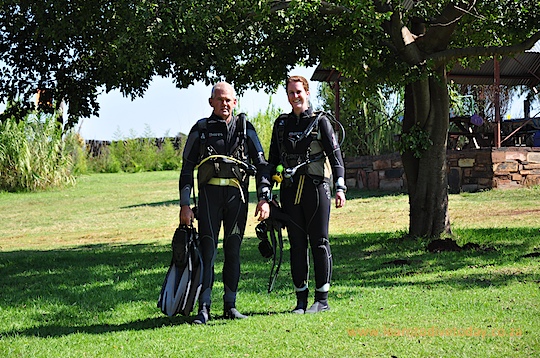
The water in the Oog is crystal clear, and water lilies grow around the sides in the shallow (1-3 metre deep) water. The bottom is covered by lush green vegetation that looks like salad, and the bottom in the deeper areas is silty and causes great clouds to obscure the visibility when it is disturbed. Entry is via a ladder, and the initial swim is through shallow water filled with lilies, their long stalks curling towards the surface, where lily pads provide landing spots for dragon flies.

A small pool (less than 10 metres wide) that drops down to about five metres’ depth appears on the right; the very bottom here is muddy, but lilies line the edges. A small ridge separates this pool from the main pool, which is perhaps 20 metres across and has three distinct zones of vegetation. The top area surrounding the pool has a flat bottom and is covered with water lily plants. From 3-6 metres there is green foliage, and from 6 metres to the bottom of the pool is mud.
A platform is suspended from drums at about 6 metres, and is used for skills training by the Johannesburg dive schools who sometimes bring their students here (not much sea in Gauteng). At the very bottom of the pool, a pipe descends under a rock, from which the spring water is collected for bottling. The rock apparently forms part of a swim through, which I was not about to try. Willie, the owner of the farm, told us that a trained cave diver had reeled out 100 metres of line (resonably taut, I hope) in a dive beneath the rock, so there’s enough space to travel quite far below the Oog towards the very source of the spring.

The fauna inhabiting the Oog is not prolific, but we saw several crabs in the mud, and a number of fish. I’ve struggled mightily to identify the fish, some of which seem to feed from the silt at the bottom of the pools, and others of which look like bass or tilapia and were seen with a huge cloud of fry. There are also eels, but we didn’t see any. We did spot a giant monitor lizard clambering about at the edge of the reeds while we were watching birds returning to roost in the reeds and feed at the Oog in the evenings.
It was interesting to dive in a freshwater environment – in contrast to the usual 7 kilograms of weight I use to sink me and my 8 millimetre Cape Town wetsuit for a shallow dive, I wore 3 kilograms, and not even on a weight belt. Two kilograms were in my BCD pockets, and the 3rd kilo, added as an afterthought, moved from by sternum to behind my knee during the course of the dive. The migration of a square block of lead through my wetsuit was something of a distraction, it must be said.
Marico Oog is a popular night diving destination, and when the moon is full it must be magnificent. It is recommended that not more than eight divers use the Oog at one time, and even this would be quite cramped for my taste. We were fortunate enough to have it all to ourselves, and for my second dive of the day I was all alone. Tony observed the most of my second dive from the pontoon attached to a cable that can be pulled out over the Oog – it was novel to dive in water so clear that we could see each other in the different mediums.

I’ve been wanting to go to Marico Oog since Tony told me about it when I met him, but thought I’d never get there because it’s so remote. Actually, it fitted in quite well with flying to and from Lanseria airport and driving to Gaborone – we took a lot of dirt roads to get there, but there’s a tarred road running straight past the farm from Zeerust. If you’re in the vicinity and fancy some total relaxation and beautiful diving, a visit to Marico Oog is highly recommended.
Dive date: 22 March 2012
Air temperature: 24 degrees
Water temperature: 20 degrees
Maximum depth: 12.4 metres
Visibility: 15 metres
Dive duration: 36 minutes















